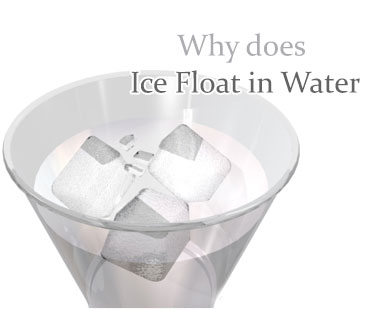It appears amazing when we think of ice floating on water. Isn’t ice made of
water itself? If yes, then how does it manage to be on the surface of the water?
Let’s break up the question into parts:
Why do things float?
Things float thanks to Archimedes. It’s not that he causes things to float, but
he was the first to give us a rational reason for this; he said, “An object,
wholly or partially immersed in a fluid, is buoyed up by a force equal to the
weight of the fluid displaced by the object.”
Its English translation is: if an object is immersed in water (or any other
fluid), it displaces some water. The displaced water has some weight. And it
literally uses all that weight to push the foreign object out of itself. If the
force that the water is applying on the foreign object is more than the weight
of the object, the object floats.
So, an object will float if its weight is less then the weight of the water it
displaces.
How does ice fit into it?
When water is cooled it condenses and the scientific experiments have proved
that water attains maximum density, weight per unit volume, at 4 °C. When the
temperature is lowered further, new kinds of forces take hold (hydrogen bonding)
which prevents further compacting of the structure. As a result, when water
turns into solid ice, it is less dense than water. In other words, ice is
lighter than the water!
Now, when we put some ice in water, the ice displaces some water. The water
tries to get rid of the ice and pushes it upward. And, because the ice is less
dense as compared to water, it floats on the water.
* Source: thegeminigeek.com




















